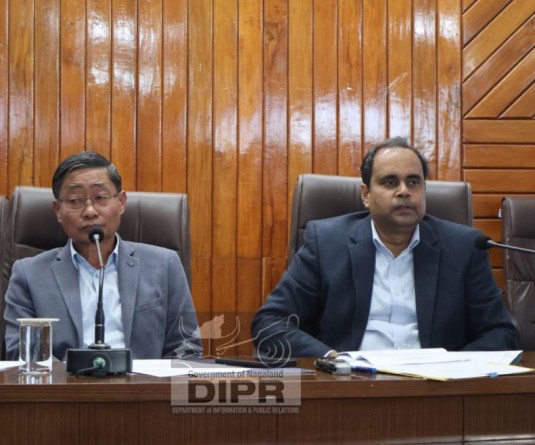
Our Correspondent
Kohima | March 31
Agriculture is considered the backbone of the state economy. Nagaland is principally an agrarian economy making the single largest contribution to the state economy from agriculture and its allied sectors.
Rice being the staple crop of the state covers about 70 per cent of the net cultivated area registering a production of 4,54, 190 MT during 2015-15 and a targeted production of 4, 82, 080 MT in 2015-16.
This was stated in Nagaland Economic Survey 2015-16 brought out by state’s department of economics & statistics and tabled in the recent state assembly session here.
The other major crops include maize, linseed, potato, pulses, soyabean, sugarcane, jute, gram, cotton and castor. However, self sufficiency in foodgrain is yet to be achieved and the state is still dependent on imports.
Agriculture is the largest employer of the workforce in the state. Although the working population has significantly declined from 96.5 per cent during 1950s to 60 per cent by 2013, it continues for form an indispensable source of livelihood for the people. Shifting and terrace cultivation practices remain the dominant form of land use in the state.
Growth in agriculture
Despite the importance of agriculture to the state’s economy and livelihood, the contribution of this sector to the Gross State Domestic Product (GSDP) showed a downward trend from 31. 82 per cent in 2013-14 to 29.74 per cent in 2015-16. The annual growth rate during the same period is projecting inconsistent trend with 7.83 per cent during 2015-16 at constant prices (2011-12).
Production and productivity
With the state population projected at 27, 98, 539 by 2025, emphasis on improving the production and productivity of agriculture is crucial to bridge the gap between the demand and supply of food grains. So far, appropriate technologies focusing on “Hill Agriculture” supported by use of quality inputs, farm mechanization, infrastructure support, market linkages, value addition and extension services have been introduced in the state.
In addition to these efforts, attention is required on resource management and sustainable agricultural practices to negate the adverse impact of climate change on the state’s agriculture.
In 2014-15, the area under foodgrain occupied 68.23 per cent of the total cropped area and 82.38 per cent of the net sown area. During the same period, the area under cereals increased by 2.16 per cent, area under pulses increased by 0.68 per cent and the total area under foodgrain increased by 1.98 per cent or by 6150 hectares over the preceding year. The area under foodgrain is also anticipated to increased by 2.68 per cent to 324680 hectares in 2015-16.Similarly, the area under oilseeds and commercial crops also increased by 0.30 per cent and 1.53 per cent respectively in 2014-15 as against that of the preceding year. And likewise, area coverage under these crops are expected to increase by 0.92 per cent and 2.21 per cent which is 67920 hectares ad 39350 hectares respectively as against the area covered in 2014-15. As other parts of the country, with limited irrigation facilities, agriculture production and productivity in the state is dependent on monsoons. As per the final estimates, the production of cereals and pulses increased to 608870 MT and 42400 MT respectively in 2014-15 against 583680 MT and 40,600 MT in 2013-14. Similarly, production of oilseeds and commercial crops also increased to 69500 MT and 457000 MT respectively in 2014-15 as against 69300 MT and 448950 MT respectively in 2013-14. The total food grains production in the state is anticipated to increased by 4.64 per cent, total oilseeds by 0.89 per cent commercial crops by 3.36 per cent in 2015-16.
The Survey found that in the long run, on account of the limitations in expansion of cultivable land, achieving higher growth in agriculture will be determined by increase in yield.
“Focus should therefore be on increasing productivity through adaptation of suitable technology, use of inputs such as use of high yielding varieties of crops,” the Survey observed adding that with favorable monsoon prevailing during the last few years the productivity level of all the major crops showed a upward trend except for the oilseeds and commercial crops which declined marginally.






